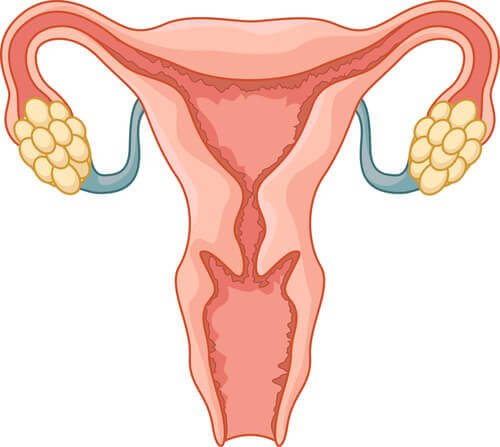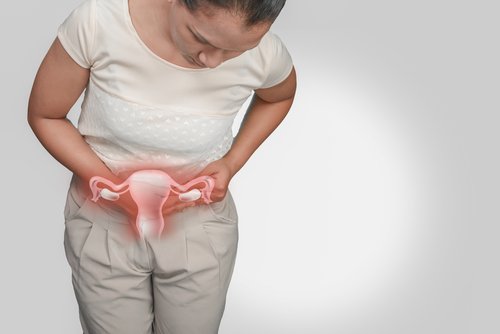The 6 Most Common Causes of Infertility in Women

Infertility is the inability to conceive after a year or more of unprotected sex. Although fertility in women declines with age, it’s important to note that it’s not just a problem in women. Men can also have fertility problems.
Also, infertility isn’t the same as being sterile. There are couples who have been able to conceive after seeking medical help. The estimate is that about 30% of infertility corresponds to a problem in the woman’s body. These problems can come from a variety of factors, many of which are treatable.
Therefore, the first and most important step is to determine the cause of problems. A doctor can diagnose the cause of infertility in women several different ways. These include seeing a fertility doctor, getting blood tests and pelvic ultrasound or X-rays, and sometimes a laparoscopy.
Causes of Infertility
In women, the most common causes of infertility are:
-
Polycystic Ovary Syndrome (PCOS)

PCOS is a condition in which the ovaries secrete abnormally high amounts of androgens (male hormones) that often cause problems with ovulation. Women with PCOS have enlarged ovaries that contain multiple small cysts.
Check this out too: How is Ovarian Cancer Detected?
-
Endometriosis
Endometriosis occurs when the endometrial cells (cells inside the uterus) grow outside the uterus. The distorted anatomy due to endometriosis may block or change the function of the fallopian tubes. Then this prevents sperm from reaching the egg to fertilize it.
-
Fibroids

Fibroids are non-cancerous masses that appear in the uterus or cervix. One of every four women between 30 and 40 have uterine fibroids.
Fibroids can cause blockages in the fallopian tubes, preventing the embryo from attaching to the uterine wall and thus causing a miscarriage. The impact of fibroids on fertility depends on their size and location.
Learn more: What Are Uterine Fibroids? Find Out With These 5 Important Facts
-
Early Menopause
Early ovarian failure is also called early menopause. It is a condition whereby the ovaries stops ovulating earlier than normal. The range of average age for menopause is between 45 and 55 years. Other conditions include thyroid disorders and genetic conditions.
A woman’s age is an important factor and the most important indicator of her ability to conceive. Conception rates for normal healthy couples are, at best, 20-25% per menstrual cycle. Once a woman reaches the age of 35, her fertility starts to decline.
At the age of 40, experts estimate that her conception rate is in the range of 8-10% per month. Then at age 43, her pregnancy rate is perhaps as low as 1-3% per month.
In addition to a reduction in pregnancy rates associated with the age of the female, there is also a significant increase in the risk of miscarriage and chromosomal abnormalities in the baby.
-
Irregular Menstrual Cycles

Irregular cycles may suggest an ovulation problem. The average menstrual cycle length is 28 days, but it can vary between 25 to 35 days. The cycle depends on a complex interaction of hormones, so any hormonal imbalance can cause irregular periods. Although irregular cycles are not dangerous in most cases, it’s important to determine the cause.
-
Unexplained Infertility
It’s estimated that about 10% of infertility is unexplained, even after a thorough medical evaluation.
Fertility Treatments

Once the cause of your infertility has been determined, a treatment plan can be designed. Treatment options for female infertility include:
-
Ovulation Induction
Ovulation induction involves the use of medications (Clomid or follicle-stimulating hormone) to regulate ovulation and stimulate the ovaries. Ovulation induction is often combined with intrauterine insemination. In this procedure, the sperm is inserted directly into the women’s uterus to increase the likelihood of fertilization.
-
Surgery
In women, surgery can often improve the chances of conception when the cause of infertility is in past inflammation, infections, or scars that have caused conditions such as fibroids, endometriosis, and other uterine problems.
-
In Vitro Fertilization (IVF)
A couple uses IVF when infertility hasn’t responded to other medical or surgical interventions. It involves the fertilization of the egg by sperm in an incubator outside the body. After that, the specialist will transfer the embryo back into the uterus.
While infertility can be a challenging experience for you and your partner, the good news is that treatment is usually possible. Don’t despair!
All cited sources were thoroughly reviewed by our team to ensure their quality, reliability, currency, and validity. The bibliography of this article was considered reliable and of academic or scientific accuracy.
- Roupa, Z., Polikandrioti, M., Sotiropoulou, P., Faros, E., Koulouri, A., Wozniak, G., & Gourni, M. (2009). Causes of infertility in women at reproductive age. Health Science Journal.
- Brugo-Olmedo, S., Chillik, C., & Kopelman, S. (2001). Definition and causes of infertility. Reproductive BioMedicine Online. https://doi.org/10.1016/S1472-6483(10)62193-1
- Bulletti, C., Coccia, M. E., Battistoni, S., & Borini, A. (2010). Endometriosis and infertility. Journal of Assisted Reproduction and Genetics. https://doi.org/10.1080/00362177985380601
- Maheshwari, A., Hamilton, M., & Bhattacharya, S. (2008). Effect of female age on the diagnostic categories of infertility. Human Reproduction. https://doi.org/10.1093/humrep/dem431
This text is provided for informational purposes only and does not replace consultation with a professional. If in doubt, consult your specialist.








